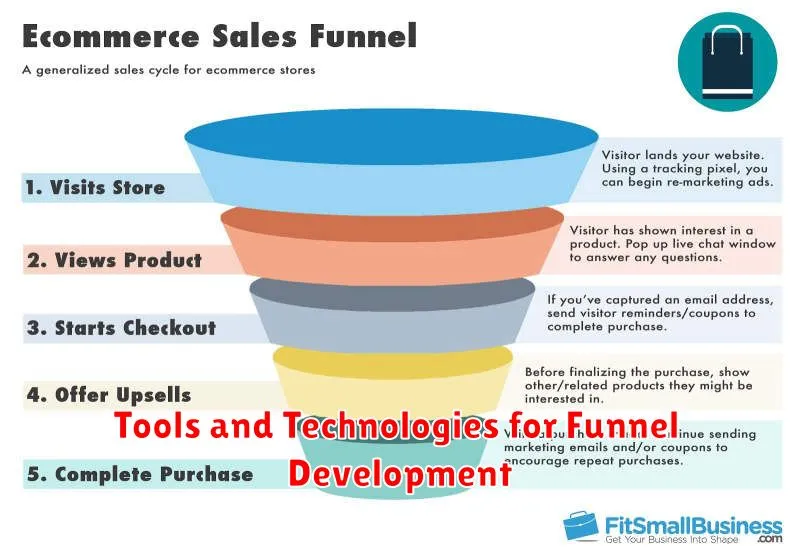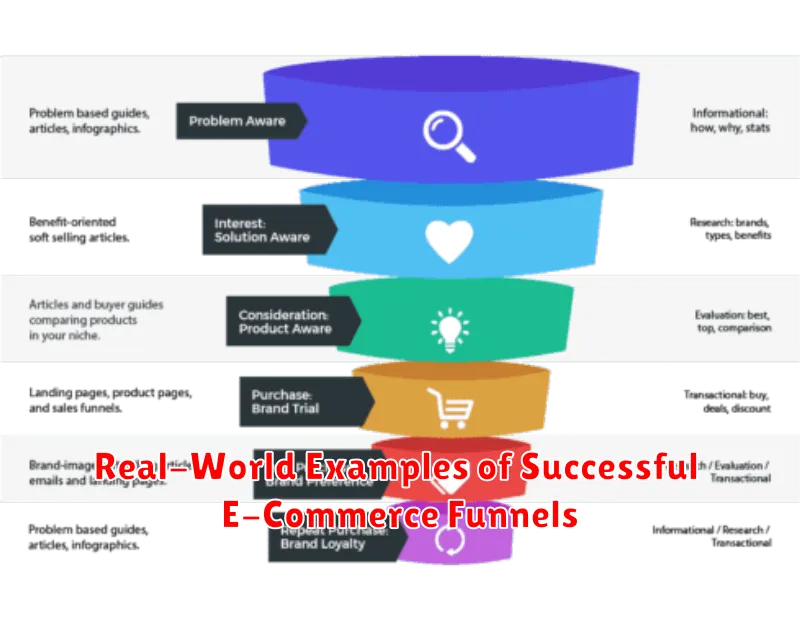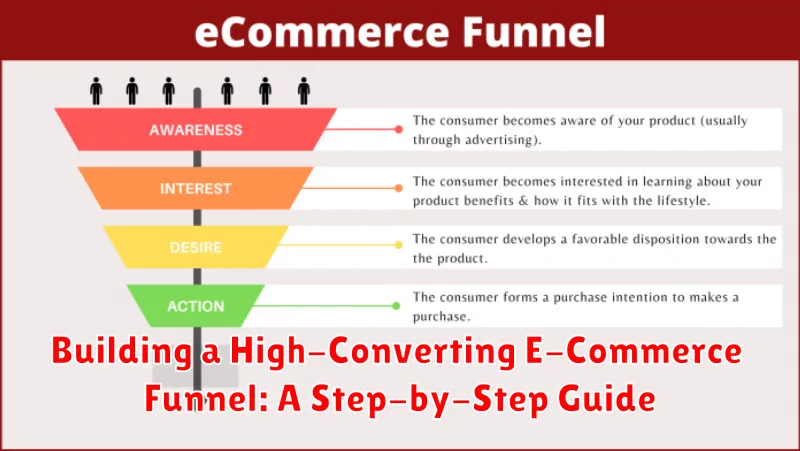Are you struggling to convert website visitors into paying customers? Do you want to maximize your e-commerce revenue and build a high-converting sales funnel that consistently delivers results? This comprehensive, step-by-step guide will equip you with the knowledge and actionable strategies needed to create an effective e-commerce funnel. We’ll cover everything from attracting targeted traffic to nurturing leads and optimizing your checkout process for maximum conversions. Learn how to build a high-converting e-commerce funnel that drives sales and grows your business exponentially.
This guide will delve into the crucial stages of a successful e-commerce funnel, including awareness, interest, desire, and action (AIDA). We will explore proven tactics for each stage, such as using search engine optimization (SEO) and social media marketing to drive targeted traffic, crafting compelling product descriptions to generate interest, building trust with customer testimonials to cultivate desire, and optimizing your checkout process to encourage action. By understanding and implementing these strategies, you can transform your online store into a high-converting e-commerce funnel that consistently generates sales and boosts your bottom line.
Understanding the E-Commerce Sales Funnel
The e-commerce sales funnel is a visual representation of the customer journey, from initial awareness of your brand to a completed purchase. It’s a crucial concept for understanding how customers interact with your online store and identifying areas for improvement.
Think of it as a funnel: a wide opening at the top represents the large pool of potential customers. As customers progress through the stages, the funnel narrows, representing the decreasing number of prospects at each step.
By understanding each stage of the funnel, you can tailor your marketing and sales strategies to effectively guide customers towards conversion. This targeted approach maximizes your return on investment and helps build a sustainable e-commerce business.
Key Stages of a Typical E-Commerce Funnel
A typical e-commerce funnel comprises several key stages, each representing a step closer to conversion. Understanding these stages allows businesses to tailor their strategies for maximum impact.
1. Awareness
The first stage is awareness. This is where potential customers become aware of your brand or products. This could be through social media, search engine results, or advertisements.
2. Interest
Once aware, potential customers may express interest. They might visit your website, browse product pages, or read reviews. This stage is about capturing their attention and showcasing the value proposition.
3. Desire
Desire is the next crucial step. Here, the customer develops a genuine want for your product. Effective marketing strategies, highlighting benefits and addressing pain points, fuel this desire.
4. Action
Finally, the action stage is where the conversion happens. This could involve adding the product to the cart, completing the purchase, or signing up for a service. This stage is heavily influenced by factors like website usability and a seamless checkout process.
Mapping Your Customer Journey
Mapping the customer journey is crucial for understanding how customers interact with your online store. This involves visualizing the steps a typical customer takes, from initial awareness to post-purchase engagement.
Start by identifying your target audience. Consider their demographics, online behavior, and pain points. Then, outline the touchpoints where they might encounter your brand (e.g., social media, search engines, advertisements).
Next, detail the steps a customer typically takes within your sales funnel. This might include visiting your website, browsing products, adding items to the cart, completing the checkout process, and receiving the product.
Finally, consider the post-purchase experience. This includes follow-up emails, customer service interactions, and opportunities for reviews and feedback. A well-mapped customer journey helps identify potential friction points and areas for optimization within your e-commerce funnel.
Strategies for Building an Effective Funnel
Building a high-converting e-commerce funnel requires a strategic approach. Focus on attracting the right audience and guiding them seamlessly through each stage. Here are some key strategies:
Targeted Advertising
Employ highly targeted advertising campaigns on platforms like Google Ads and social media. Precise targeting ensures your message reaches potential customers who are most likely to be interested in your products.
Compelling Content Marketing
Create valuable and engaging content that educates and entertains your target audience. This could include blog posts, videos, or infographics related to your products. Content marketing helps build brand awareness and establish your expertise.
Optimized Landing Pages
Design dedicated landing pages for each stage of the funnel. These pages should have a clear call to action and be optimized for conversions. Minimize distractions and focus on the key message.
Personalized Email Marketing
Implement personalized email sequences to nurture leads and guide them towards a purchase. Tailor the content of your emails based on the customer’s behavior and stage in the funnel.
Optimizing Your Funnel for Conversions
Once your e-commerce funnel is established, the next crucial step is continuous optimization to maximize conversions. This involves meticulous analysis and strategic adjustments to improve performance at each stage.
A/B testing is paramount. Experiment with different variations of key elements such as headlines, call-to-action buttons, product descriptions, and even checkout processes. Track the performance of each variation to identify what resonates best with your target audience and drives higher conversion rates.
Streamlining the checkout experience is essential. Minimize the number of steps required to complete a purchase. Offer guest checkout options and ensure the process is mobile-friendly. A cumbersome checkout process can lead to cart abandonment.
Personalization can significantly impact conversions. Leverage data to tailor product recommendations, offers, and messaging based on user behavior and preferences. Personalized experiences create a stronger connection with customers, encouraging them to move further down the funnel.
Analyzing and Improving Funnel Performance
Analyzing your e-commerce funnel’s performance is crucial for maximizing conversions. Key Performance Indicators (KPIs) provide valuable insights into each stage of the funnel, allowing you to identify bottlenecks and areas for improvement. Track metrics like bounce rate, cart abandonment rate, and conversion rate for each stage.
Regularly analyze these KPIs to understand how users interact with your funnel. A high bounce rate at the top of the funnel might indicate issues with your ad targeting or landing page experience. A high cart abandonment rate suggests problems with shipping costs, payment options, or a complex checkout process. By pinpointing these issues, you can implement targeted solutions.
A/B testing is a powerful technique for optimizing your funnel. Experiment with different variations of your landing pages, product descriptions, calls to action, and checkout process to see what resonates best with your target audience. Continuously analyzing and iterating based on data-driven insights is essential for improving funnel performance and achieving higher conversion rates.
Common Mistakes to Avoid in Funnel Building
Creating an effective e-commerce funnel requires careful planning and execution. Avoiding common pitfalls can significantly improve conversion rates and overall success. Here are some key mistakes to steer clear of:
1. Neglecting Mobile Optimization:
A significant portion of online traffic originates from mobile devices. Failing to optimize your funnel for mobile users can lead to a frustrating user experience and lost sales.
2. Complicated Checkout Process:
A lengthy or confusing checkout process is a major deterrent for customers. Streamline the process and minimize the number of steps required to complete a purchase.
3. Lack of Clear Call-to-Actions (CTAs):
Clear and compelling CTAs are essential for guiding users through the funnel. Ensure each stage has a well-defined CTA that encourages the desired action.
4. Ignoring Analytics:
Regularly analyzing funnel performance is crucial for identifying areas for improvement. Use data to understand user behavior and optimize your funnel accordingly.
5. Not Personalizing the Experience:
Personalization can significantly enhance the customer journey. Tailor the funnel experience to individual user preferences and behaviors whenever possible.
Tools and Technologies for Funnel Development

Several tools and technologies can streamline the process of building and optimizing your e-commerce sales funnel. Selecting the right ones depends heavily on your specific needs and budget.
E-commerce Platforms
Platforms like Shopify, WooCommerce, and BigCommerce offer built-in features to manage products, inventory, and customer data. They often integrate with other crucial funnel tools.
Landing Page Builders
Tools like Leadpages, Instapage, and Unbounce are designed for creating high-converting landing pages. They offer drag-and-drop interfaces and A/B testing capabilities to optimize for conversions.
Email Marketing Services
Email marketing platforms like Mailchimp, Klaviyo, and Constant Contact automate email campaigns, segment audiences, and track key metrics. They are essential for nurturing leads and driving sales.
Analytics and Tracking
Google Analytics and similar analytics platforms are crucial for monitoring funnel performance. Track key metrics like conversion rates, bounce rates, and cart abandonment to identify areas for improvement.
Real-World Examples of Successful E-Commerce Funnels

Examining successful e-commerce funnels provides valuable insights for building your own. Here are a few examples showcasing different approaches:
Example 1: The Subscription Box Model
A popular model leverages the subscription box funnel. Companies like Dollar Shave Club simplified the process by offering a straightforward subscription signup with various tiered options. This model focuses on recurring revenue and customer retention.
Example 2: The Free Trial Funnel
Software and digital service providers often utilize a free trial funnel. Spotify, for example, offers a free tier with limited features, enticing users to upgrade to a premium subscription for full access. This allows users to experience the value proposition before committing.
Example 3: The Upselling Funnel
Amazon excels at the upselling funnel. After adding an item to the cart, customers are presented with related products and bundles, increasing the average order value. This strategy capitalizes on impulse purchases and customer convenience.

